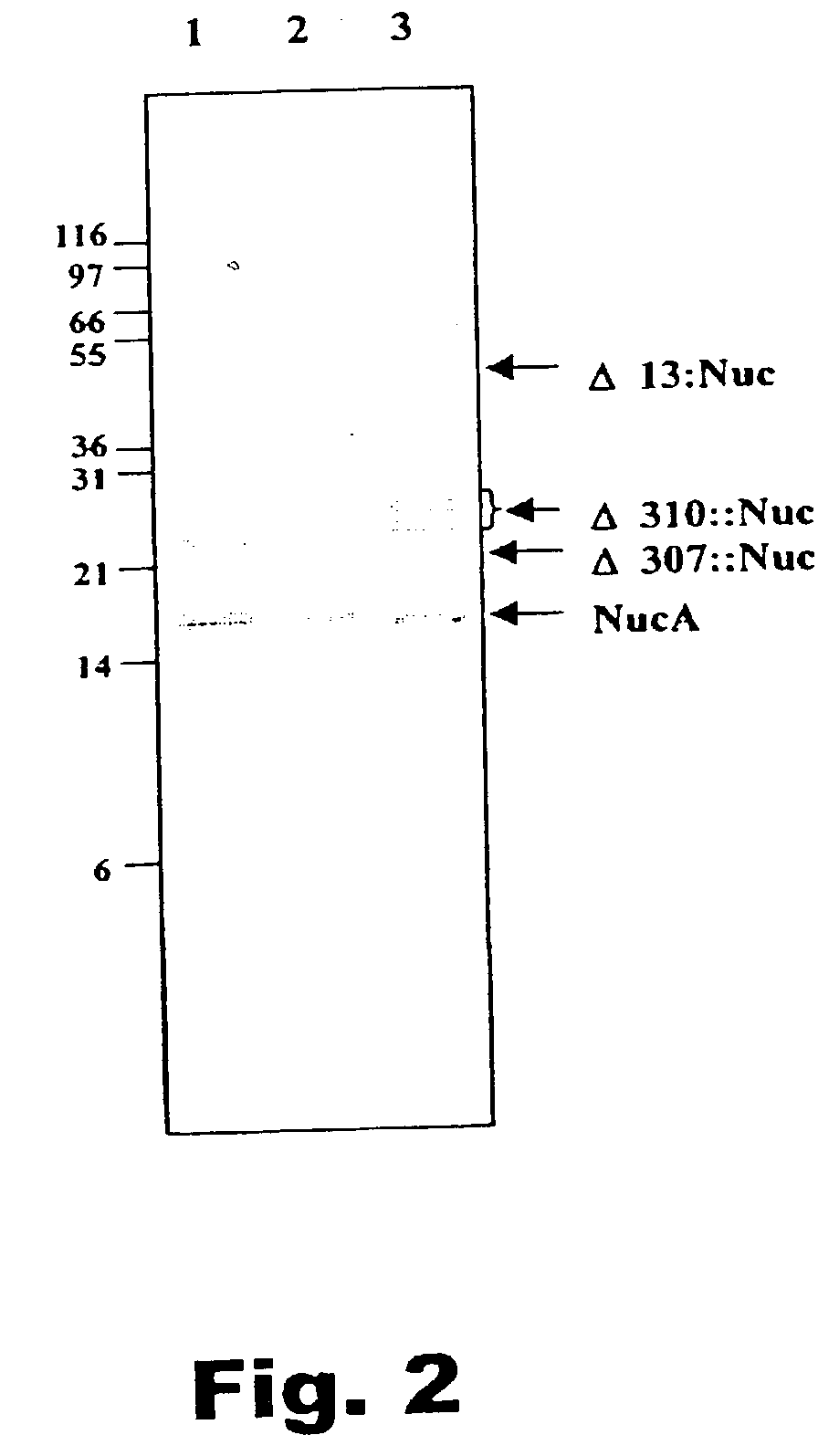Method of isolating secretion signals in lactic acid bacteria and novel secretion signals isolated from lactococcus lactis
a technology of lactococcus lactis and secretion signals, which is applied in the field of grampositive bacteria, can solve the problems of limiting the secretion of heterologous proteins into the culture supernatant, imposing a tedious and labor-intensive selection step for functionality in the primary host, and limiting the possibility of direct screening
- Summary
- Abstract
- Description
- Claims
- Application Information
AI Technical Summary
Benefits of technology
Problems solved by technology
Method used
Image
Examples
example 1
The Development of TnNuc and its use for the Isolation of Novel Secretion Signals in Lactococcus lactis
[0042] Abbreviations: aa: amino acid(s); B.: Bacillus; bp: base pair; E.: Escherichia coli, Em: Erythromycin; L.: Lactococcus; LR: left repeat; nuc: Nuclease coding gene; Nuc: Nuclease protein; nt: nucleotide; S.: Staphylococcus; SP(s): signal peptide(s) or secretion signal; St.: Streptococcus
[0043] 1.1. Abstract
[0044] The construction of a new Tn917-transposon derivative, termed TnNuc, which includes the Staphylococcus aureus nuclease gene (nuc) as a reporter for secretion is described. Transposition of TnNuc into the L. lactis chromosome permits the generation of fusions inframe with the nuc gene. TnNuc also includes JacZ, a reporter used for identification of relevant clones from the library, i.e. clones with Lac.sup.+ phenotype resulting from transposition of TnNuc into a functional gene on the L. lactis chromosome. The presence of a functional signal sequence at the upstream f...
example 2
Molecular Characterization and Engineering of SP310, a Signal Peptide From Lactococcus lactis
[0094] 2.1 Abstract
[0095] Among the signal peptides (SP) identified in Example 1, SP310 showed the highest level of secretion. However, the levels obtained were lower than those obtained using the signal peptide of Usp45 (SPUSP), the major secreted lactococcal protein. In this example is describes a site-directed mutagenesis approach for SP310 designed to improve secretion levels and to study the requirements for Sec-dependent secretion in L. lactis. One of the mutants analyzed, SP310mut2, showed a secretion level similar to SPUSP, yielding more than 150 mg / L Staphylococcus aureus Nuclease (Nuc) in fermentor. This represents a 45% improvement with respect to the wild type SP310 sequence. The analysis of Nuc secretion in the mutants allowed the establishment of some of the requirements for efficient secretion in L. lactis. Common features for the L. lactis Sec-dependent secretion pathway diff...
PUM
| Property | Measurement | Unit |
|---|---|---|
| volume | aaaaa | aaaaa |
| volume | aaaaa | aaaaa |
| volume | aaaaa | aaaaa |
Abstract
Description
Claims
Application Information
 Login to View More
Login to View More - R&D
- Intellectual Property
- Life Sciences
- Materials
- Tech Scout
- Unparalleled Data Quality
- Higher Quality Content
- 60% Fewer Hallucinations
Browse by: Latest US Patents, China's latest patents, Technical Efficacy Thesaurus, Application Domain, Technology Topic, Popular Technical Reports.
© 2025 PatSnap. All rights reserved.Legal|Privacy policy|Modern Slavery Act Transparency Statement|Sitemap|About US| Contact US: help@patsnap.com



